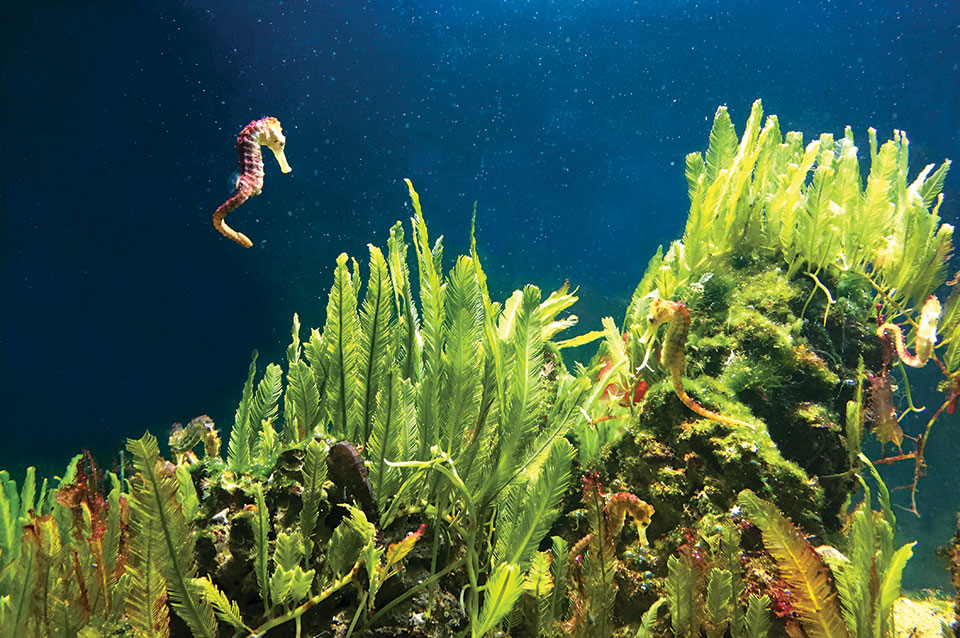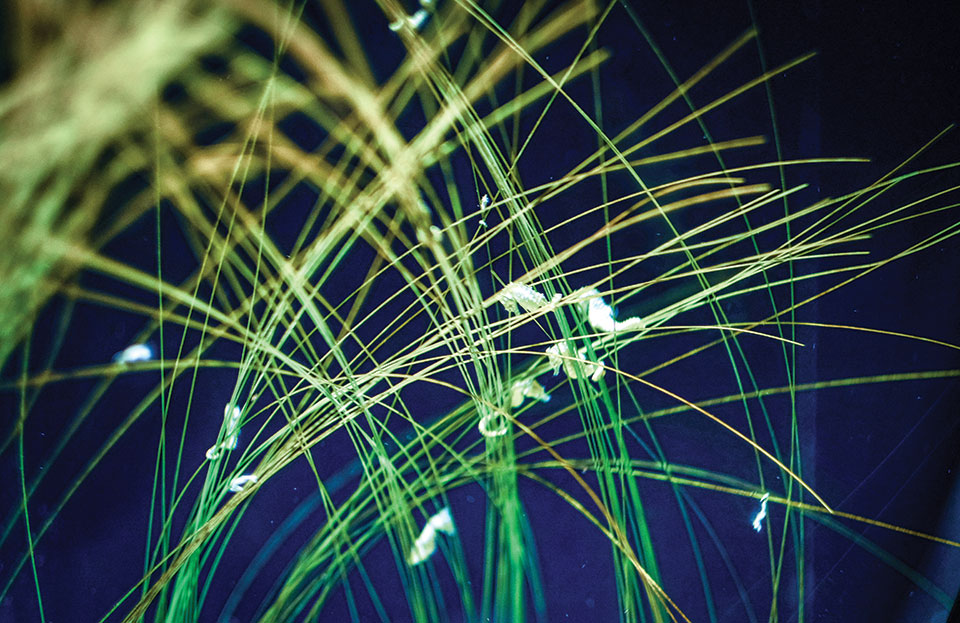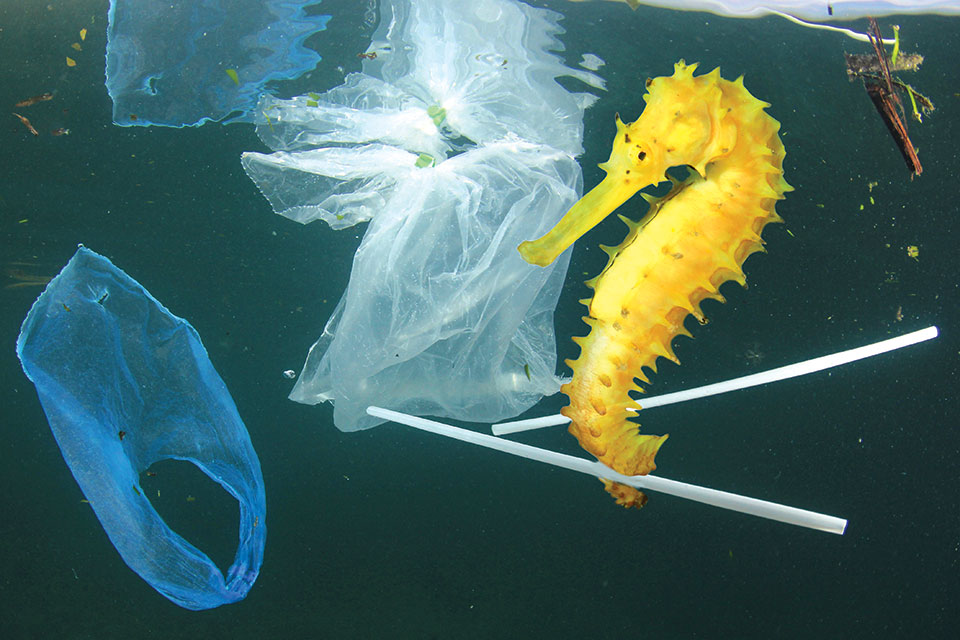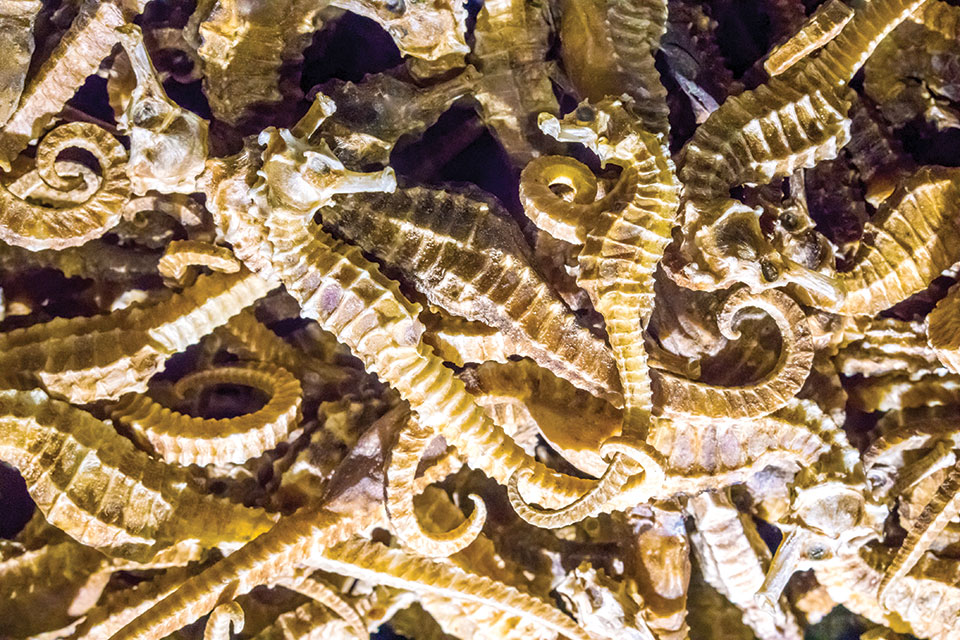
Seahorses are fish and there are about forty-seven known species with the most population countries for seahorses being Australia, China and the Philippines.
The most endangered seahorse is the Cape seahorse (Hippocampus capensis) endemic to South Africa. This species has a restricted and fragmented distribution, only known in a few estuaries. Its habitat is threatened by development and water pollution. Most seahorse species are data deficient and their population trends and status are unknown. Eight species are classified as threatened in the classification of vulnerable or endangered.
Seahorses are very fascinating and magical marine creatures. They have a head like a horse, a tail like a monkey, a head that moves independently, and skin color that can change like a chameleon. They lack teeth, a stomach, and a caudal fin. Seahorses can reach a size of eight inches. The smallest seahorse is Hippocampus satomiae. This pygmy species is found near Derawan Island off Kalimantan, Indonesia. The life cycles of seahorses are unknown as most of their natural history remains mysterious.
Seahorses inhabit mainly tropical and coastal waters. They live in mangroves, seagrass beds, and estuaries. The majority of seahorse species are socially monogamous. The courtship behaviors are complex with partners displaying changes in color. They use their long snouts to absorb tiny shrimp, fish, and plankton. Seahorses protect themselves against predators by blending perfectly into their environment.

Unlike most species, it is the male seahorse that gives birth to their offspring. A male can give birth to up to several hundred young from one pregnancy. Overall, seahorses are characterized by a rapid growth rate, early age at maturity, high natural mortality, short generation time, and multiple spawnings per year.
One threat to seahorses is legal and illegal trade for ornamental display as they are sold dried as souvenirs. More than 20 million seahorses are estimated to be traded each year for Chinese medicine. Hundreds of thousands of seahorses are sold for the aquarium trade driven primarily by North American countries. The pet trade takes an estimated one million seahorses from the wild and It is thought that less than 1,000 survive more than six weeks.


They are accidentally caught in the shrimp trawls off the coasts of Florida, Mexico, Central America, and South America. Habitat degradation and destruction due to coastal development, marine pollution, coral reef destruction, and land-based deforestation are also significant contributors. Deforestation leads to increased siltation in surrounding marine waters, thereby suffocating seagrass beds and killing coral reefs.
Different organizations list the seahorses in different categories but it is clear that they are fish that should be protected and the most we as consumers can do to assist the various organizations studying and trying to protect the seahorses is stop buying souvenirs and aquarium fish.
